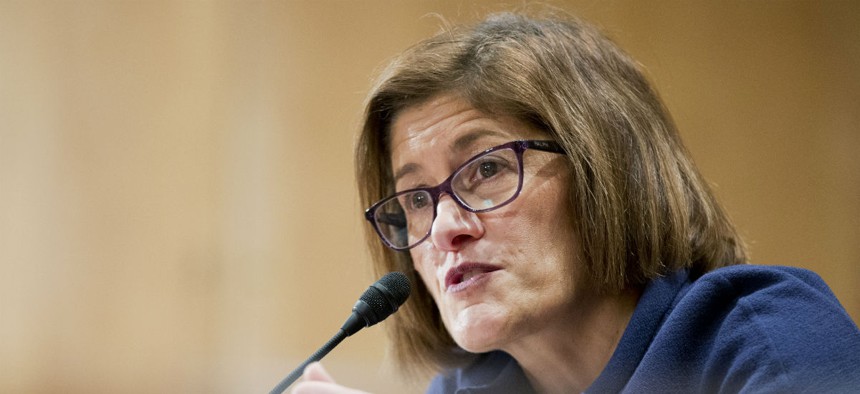OPM To Agencies: Figure Out How to Close Skills Gap in the Federal Workforce
At-risk mission-critical jobs include cybersecurity, HR, and STEM.
The Office of Personnel Management is directing chief human capital officers to figure out how to eliminate skills gaps in mission-critical jobs within a decade.
CHCOs will work with occupational leaders “to develop a governmentwide strategy to address the root causes for why an occupation has been deemed ‘at risk,’” OPM acting Director Beth Cobert wrote to the federal HR community in an April 15 letter. In addition, CHCOs will be responsible for identifying at-risk mission-critical jobs specific to their own agencies. There are also new quarterly and annual reporting requirements, according to the memorandum.
OPM has identified six mission-critical jobs across government: cybersecurity; auditor; human resources specialist; contract specialist; economist; and STEM (science, technology, engineering and mathematics) occupations.
The problem is not new. A 2015 Government Accountability Office report concluded that “mission-critical skills gaps within specific federal agencies as well as across the federal workforce pose a high risk to the nation because they impede the government from cost effectively serving the public and achieving results.” Skills gaps within the federal workforce first appeared in 2011 on GAO’s biennial list of government programs and areas that are at high risk for mismanagement and other problems.
The growing number of federal employees eligible for retirement threatens to exacerbate the problem, GAO said. Budget pressures, declining job satisfaction among federal workers, and more government jobs requiring advanced degrees and qualifications are other factors contributing to the challenge agencies face maintaining a talented workforce capable of carrying out their missions. Thirty percent of all career permanent employees on board as of Sept 30, 2013, will be eligible to retire by 2018, GAO said.
Specifically, OPM is tasking CHCOs and occupational leaders with developing and submitting a four-year short-term plan, and a 10-year long-term strategy for closing identified skills gaps in mission-critical jobs across government and within their own agencies.
OPM created an interagency group as well as a data program dubbed HRStat a few years ago to figure out the mission-critical occupations where agencies had trouble recruiting and retaining employees with the proper skills. Cobert said in her memo that agencies also will need to “monitor progress on metrics for achieving desired goals through HRStat quarterly reviews.”
The 2015 GAO report said overall progress on closing skills gaps had been “mixed” because the challenges across the government are diverse and “not fully captured” by OPM. “At times, goals have suffered from having targets that are difficult to measure,” the report stated. “Likewise, agency officials have chosen to track metrics that often do not allow for an accurate assessment of progress made toward these goals for closing skills gaps.”
Cobert said OPM will provide agencies with guidance on developing strategies and reporting.




